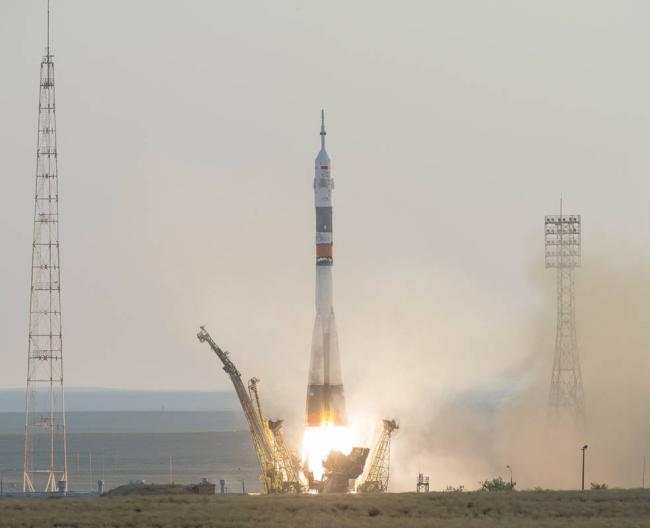
Kate Rubins of NASA, Soyuz Commander Anatoly Ivanishin of the Russian space agency Roscosmos and Takuya Onishi of the Japan Aerospace Exploration Agency are traveling in an upgraded Soyuz spacecraft. They’ll spend two days -- and 34 Earth orbits – testing modified systems before docking to the space station’s Rassvet module at 12:12 a.m. EDT Saturday, July 9, read the NASA webiste.
NASA TV coverage of docking will begin at 11:30 p.m. Friday, July 8. Hatches are scheduled to open about 2:50 a.m. Saturday, July 9, with NASA TV coverage starting at 2:30 a.m.
The arrival of Rubins, Ivanishin and Onishi returns the station's crew complement to six. The three will join Expedition 48 Commander Jeff Williams of NASA and Flight Engineers Oleg Skripochka and Alexey Ovchinin of Roscosmos. The Expedition 48 crew members will spend four months conducting more than 250 science investigations in fields such as biology, Earth science, human research, physical sciences, and technology development.
Rubins, who holds a bachelor’s degree in molecular biology and a doctorate in cancer biology, Ivanishin and Onishi are scheduled to remain aboard the station until late October. Williams, Skripochka and Ovchinin will return to Earth in September.
Expedition 48 crew members are expected to receive and install the station’s first international docking adapter, which will accommodate future arrivals of U.S. commercial crew spacecraft. Scheduled for delivery on SpaceX’s ninth commercial resupply mission (CRS-9) to the station, the new docking port features built-in systems for automated docking and uniform measurements. That means any spacecraft may use the adapters in the future – from NASA’s new crewed and uncrewed spacecraft, developed in partnership with private industry, to international spacecraft yet to be designed.
The work by private companies to take on low-Earth orbit missions is expected to free up NASA's resources for future crewed missions into deep space, including the agency’s Journey to Mars, with the Orion crew capsule launching on the Space Launch System rocket.
Investigations arriving on SpaceX CRS-9 in July will test capabilities for sequencing DNA in space, regulating temperatures aboard spacecraft, understanding bone loss, and tracking ships around the world. Other investigations will study how to protect computers from radiation in space and test an efficient, three-dimensional solar cell.
The crew members also are scheduled to receive Orbital ATK’s sixth commercial resupply mission and two Russian Progress resupply flights delivering several tons of food, fuel, supplies and research. A Japanese cargo craft will deliver new lithium-ion batteries to replace the nickel-hydrogen batteries currently used on the station to store electrical energy generated by the station’s solar arrays.
For more than 15 years, humans have been living continuously aboard the International Space Station to advance scientific knowledge and demonstrate new technologies, making research breakthroughs not possible on Earth that also will enable long-duration human and robotic exploration into deep space. A truly global endeavor, more than 200 people from 18 countries have visited the unique microgravity laboratory that has hosted more than 1,900 research investigations from researchers in more than 95 countries.
Credits: NASA/Bill Ingalls
Support Our Journalism
We cannot do without you.. your contribution supports unbiased journalism
IBNS is not driven by any ism- not wokeism, not racism, not skewed secularism, not hyper right-wing or left liberal ideals, nor by any hardline religious beliefs or hyper nationalism. We want to serve you good old objective news, as they are. We do not judge or preach. We let people decide for themselves. We only try to present factual and well-sourced news.







